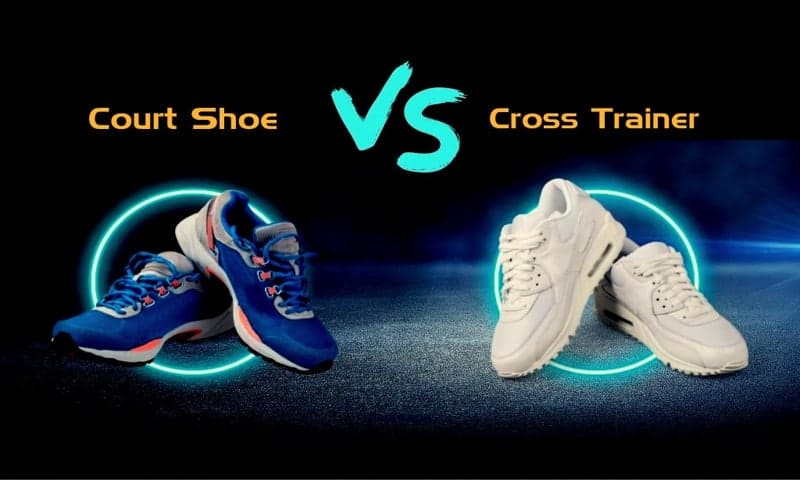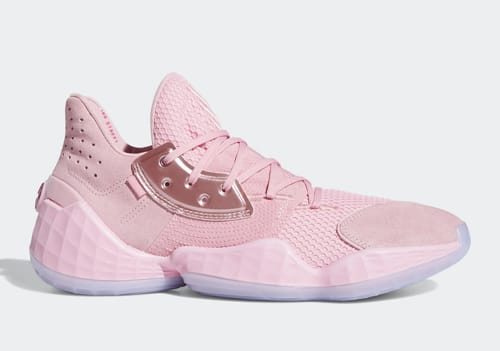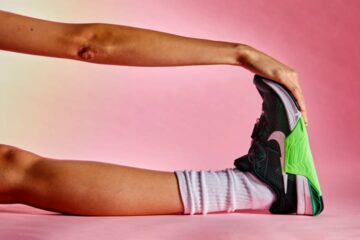Comparison between Court Shoes Cross Trainers for Fitness activities
When it comes to selecting the right shoes for your fitness activities, you may find yourself overwhelmed by the multitude of options available. Among these choices, court shoes and cross trainers emerge as popular contenders, you might also identify these footwears as tennis shoes and running shoes respectively. But what sets them apart?
In today’s article, we will delve into a detailed comparison of court shoes and cross trainers to empower you with the knowledge needed to make an informed decision.
Whether you are a dedicated sports enthusiast or simply seeking versatility in your footwear, understanding the differences between these two types is crucial in discovering your perfect fit. Join us on this exploration into the world of court shoes and cross trainers as we uncover their distinctive features.
1. Definition and purpose of court shoes and cross trainers
Court shoes and cross trainers are types of athletic footwear designed for different purposes:
Court shoes (Tennis shoes):
- Designed specifically for sports that are played on indoor courts, such as tennis, basketball, and volleyball.
- They have non-marking soles that provide excellent traction and grip on smooth surfaces.
- Court shoes offer lateral support to prevent ankle injuries during quick side-to-side movements.
- They often have reinforced toe caps to protect against abrasion and impact from the ball or other players.
- Popular court shoe brands include Nike, Adidas, and Asics.
Cross trainers (Gym or running shoes):
- Versatile athletic shoes suitable for a variety of activities, including gym workouts, aerobics, and cross-training exercises.
- They provide stability, cushioning, and flexibility for multidirectional movements.
- Cross trainers often have a wider base for better balance and support during lateral movements.
- They typically have cushioned midsoles and supportive arches for comfort during high-impact activities.
- Popular cross-trainer brands include Reebok, New Balance, and Puma.
The right choice of footwear is crucial for optimizing performance and preventing injuries during specific activities. By understanding the distinctions between court shoes and cross trainers, individuals can make informed decisions when selecting suitable footwear for their preferred sports or exercises.
2. Importance of choosing the right footwear for specific activities
Selecting appropriate footwear for specific activities is paramount to optimize performance, prevent injuries, and ensure overall comfort. Here are several compelling reasons highlighting the significance of choosing suitable footwear tailored to different activities:
- Different sports and activities have unique movement requirements and footwork. In order to perform optimally and reduce the risk of sprains or injuries, it is important to wear appropriate footwear that offers support and stability.
- Properly cushioned footwear plays a crucial role in activities like running or jumping, where significant impact is exerted on the joints and muscles. By effectively absorbing shock, these shoes minimize stress on the body, thus preventing discomfort and potential long-term damage.
- Different surfaces require varying levels of traction to maintain balance and control. Specifically tailored for particular activities, specialized patterns and materials are incorporated into the outsoles of activity-specific footwear, offering optimal grip on specific surfaces.
- Breathability and moisture management: Sweating is inevitable during physical activities. Shoes with breathable materials and moisture-wicking properties will keep the feet cool and dry, reducing the risk of blisters, odor, and fungal infections.
- The proper fit and comfort of shoes are crucial factors to consider. Ill-fitting shoes can lead to discomfort, rubbing, and potential foot problems. Conversely, choosing the right size and fit ensures optimal comfort and prevents issues such as blisters or calluses.
- In considering the style and aesthetics of footwear, one must not underestimate their impact on performance. While not the most crucial factor, feeling comfortable and confident in your chosen footwear can have a positive influence on motivation and overall enjoyment during any physical activity.
Considering these factors and selecting footwear specifically designed for the activity at hand can improve individuals’ performance, reduce the risk of injuries, and enhance their overall comfort.
Court shoes (Training )
1. Features and design of court shoes
Court Shoes: Features and Design
- Many people also refer to these shoes as Tennis shoes
- Court shoes are specifically designed for sports played on court surfaces such as tennis, basketball, and volleyball. They offer specific features to enhance performance and minimize injuries.
- The upper part of the shoe is usually made of breathable materials such as mesh or synthetic leather, allowing for ventilation and keeping the feet cool and dry during intense activities.
- Court shoes have a sturdy construction to provide stability and support. They often have reinforced areas in high impact zones, such as the toe and heel, to prevent injuries and increase durability.
- The outsole of court shoes is typically made of a non-marking rubber compound. This provides excellent traction and grip on court surfaces, allowing for quick direction changes and preventing slippage.
- To enhance lateral movements, court shoes often have additional support features such as midfoot shanks or TPU overlays. These elements provide stability and prevent excessive rolling of the foot during side-to-side movements.
- Many court shoes have cushioning technologies in the midsole, such as foam or gel inserts, to absorb shock and provide comfort during high-impact activities.
- Court shoes often come in specific designs and colors to match the sports they are intended for, allowing athletes to express their individual style and team spirit.
Benefits of using court shoes for sports like tennis, basketball, and volleyball
Traction
Court shoes are specifically designed to offer exceptional traction on indoor surfaces, such as hardwood floors or sport-specific courts. This feature helps athletes maintain stability and avoid slipping incidents.
Support
Court shoes are designed with features like ankle support and cushioning to enhance stability and minimize the risk of injuries such as ankle sprains or impact-related issues. They prioritize protection while ensuring optimal performance on the court.
Quick lateral movements
The court shoes’ design facilitates quick lateral movements, making them an optimal choice for sports like tennis and basketball that involve frequent changes in direction.
Impact absorption
Court shoes often include specialized shock-absorbing materials and technologies. These innovative features aim to diminish the impact experienced by joints, thereby reducing the likelihood of knee or foot injuries.
Specific sport requirements
Different court shoes are tailored to meet the specific requirements of various sports, including tennis, basketball, and volleyball. These shoes meticulously consider the unique demands of each sport, such as lateral movements, jumping, and quick stops.
Enhanced performance
Enhanced performance is achieved through court shoes designed to cater to the specific needs of various sports. These specialized shoes optimize performance by offering a balanced combination of stability, grip, support, and flexibility.
Comfort
Court shoes are meticulously crafted with the athletic comfort in mind. These shoes feature advanced cushioning technology, breathable materials to enhance airflow, and customizable fit options that cater to individual preferences.
Durability
Court shoes are specifically designed to endure the rigorous demands of sports like tennis, basketball, and volleyball. Players in these sports often perform swift stops, change directions promptly, and subject their footwear to immense stress. The durability of court shoes enables athletes to confidently navigate the fast-paced nature of these activities without compromising on comfort or performance
Style options
Court shoes provide athletes with a wide range of styles and designs. This allows them to not only benefit from enhanced performance but also find a pair that matches their personal preferences.
Popular brands and models of court shoes
When discussing court shoes or Tennis shoes, there exist numerous esteemed brands and models known for their exceptional performance and quality. Let’s explore three popular options:
Nike Air Zoom Vapor X
This is a specially designed tennis court shoe renowned for its unparalleled comfort and stability. It provides responsive cushioning and a supportive fit, enabling swift movements and exceptional traction on the court.
Adidas Harden Vol. 4
This was created in collaboration with professional basketball player James Harden. These court shoes provide optimal support, traction, and responsiveness to enhance your game. Not only do they offer excellent performance, but they also boast a stylish design that appeals to both casual players and serious athletes alike.
The Asics Gel-Netburner Ballistic
This is a pair of court shoes primarily designed for volleyball. These shoes excel in providing superior stability and shock absorption, making them ideal for intense movements on the court. With gel cushioning in the heel and forefoot, they ensure exceptional comfort and support during high-intensity play.
When choosing court shoes, it becomes essential to consider certain factors: fit, support, and durability. Different brands offer various models with distinct features. Hence, it is crucial to try them on and assess which shoe provides the most comfort and support for your specific sport or activity.
4. Factors to consider when choosing court shoes
When one selects court shoes, several factors ought to be considered in order to guarantee optimal performance and comfort.
- Traction: Look for court shoes with a sole pattern specifically designed for indoor or outdoor court surfaces to provide maximum grip and prevent slippage.
- Support: Consider the level of support offered by the shoe, especially around the ankles. High-top court shoes provide extra stability and prevent ankle injuries, while low-top shoes offer more flexibility.
- Cushioning: Look for court shoes with adequate cushioning to absorb impact and provide shock absorption during quick movements and jumps.
- Durability: Choose court shoes made of durable materials that can withstand the demands of fast-paced court sports. Reinforced toe caps and sturdy construction can enhance durability.
- Fit: Ensure the court shoes fit snugly but comfortably, providing enough room for your toes to move without excessive sliding or discomfort.
- Breathability: Consider court shoes with breathable materials, such as mesh or perforations, to keep your feet cool and comfortable during intense physical activity.
- Weight: Opt for lightweight court shoes that won’t hinder your agility and speed on the court.
- Style: While not directly related to performance, choose court shoes that align with your personal style preferences.
Considering these factors allows individuals to discover the perfect court shoes that cater to their unique requirements and elevate their performance on the court.
Cross trainers (Tennis shoes)
1. Features and design of cross trainers
- Versatile design that combines elements of multiple sports shoes, making them suitable for a variety of activities.
- Sturdy construction with emphasis on lateral support and stability.
- Multi-directional outsole tread pattern for improved traction and grip on different surfaces.
- Cushioned midsole for shock absorption and impact protection.
- Breathable upper materials, such as mesh or synthetic overlays, to enhance airflow and prevent overheating.
- Reinforced toe and heel areas for added durability and protection.
- Ankle support and padding for stability and injury prevention.
- Adjustable lacing system for a secure and personalized fit.
- Lightweight design to minimize fatigue during extended workouts or training sessions.
- Wide range of color options and stylish designs to suit individual preferences.
Cross trainers are extremely beneficial for a wide range of activities that involve multiple movements. Think aerobics, weightlifting, circuit training, and dance-based workouts. These versatile shoes offer the perfect combination of flexibility and support required for lateral movements, quick changes in direction, and a mix of high-impact and resistance exercises.
Popular brands and models of cross trainers include Nike Metcon, Reebok Nano, Adidas Ultraboost, and New Balance Fresh Foam. When selecting the right cross trainers for your needs, it’s important to consider factors such as fit, comfort, performance features, durability, and any specific requirements related to your chosen activities.
2. Benefits of using cross trainers for various sports and activities
When considering the utilization of cross trainers across various sports and activities, one must acknowledge the numerous advantages they offer.
- Versatility is a key feature of cross trainers. These shoes are specially designed to offer stability and support for a wide range of movements, making them suitable for various activities such as aerobics, weightlifting, and circuit training.
- Cross trainers often include ample cushioning in their midsoles. This feature serves to absorb shocks and protect against impact during high-intensity workouts.
- The outsole of cross trainers is purposely designed to offer stable traction on different surfaces, whether it’s indoor or outdoor courts.
- In terms of lateral support, cross trainers are an excellent choice for activities like tennis, squash, and basketball that involve rapid side-to-side movements. Their design ensures optimal stability during these dynamic motions.
- Breathability: Many cross trainers are designed with breathable materials and ventilation systems. These features ensure proper airflow, keeping the feet cool even during intense workouts.
- Cross trainers possess exceptional durability, as they are meticulously designed to endure the rigorous demands of various sports and activities. This coveted quality ensures their longevity and reliability over time.
By offering a blend of stability, cushioning, support, versatility, and durability, cross trainers stand out as an exceptional choice for individuals engaging in diverse sports and activities. Whether one is heading to the gym, participating in basketball matches, or joining aerobics classes, these versatile shoes diligently furnish the necessary comfort and performance required to elevate their workout experience.
3. Popular brands and models of cross trainers
When it comes to popular brands and models of cross trainers, there is a wide array of options available for selection. Let’s have a look at three renowned brands along with their popular cross trainer models:
- Nike:
- Nike Metcon: Known for its versatility and stability, the Nike Metcon series is ideal for cross training and weightlifting.
- Nike Free X Metcon: Combining flexibility and support, the Nike Free X Metcon is designed for multi-sport workouts.
- Nike Air Zoom SuperRep: With responsive cushioning and a unique sole design, the Nike Air Zoom SuperRep is built specifically for high-intensity interval training (HIIT).
- Reebok:
- Reebok Nano: The Reebok Nano series offers a blend of stability, durability, and flexibility, making it suitable for various exercises and cross training activities.
- Reebok Speed TR: Designed for agility and speed, the Reebok Speed TR is perfect for cardio-based workouts and circuit training.
- Reebok CrossFit Grace: Developed in collaboration with CrossFit athletes, the Reebok CrossFit Grace provides comfort and support for functional fitness training.
- New Balance:
- New Balance Fresh Foam Roav: Combining comfort and style, the New Balance Fresh Foam Roav is suitable for both casual wear and light workouts.
- New Balance Minimus 20v7: With a minimalist design and a lightweight feel, the New Balance Minimus 20v7 is ideal for those who prefer a barefoot-like experience during their workouts.
- New Balance FuelCore NERGIZE: Offering a sleek and versatile design, the New Balance FuelCore NERGIZE provides cushioning and support for all-day wear and light workouts.
4. Factors to consider when choosing cross trainers
When choosing cross trainers, consider the following factors:
- Versatility is key when looking for cross trainers. Find ones that can seamlessly transition between a range of activities, including running, weightlifting, and aerobics.
- Opting for cross trainers that offer excellent ankle and arch support is essential to prevent injuries and maintain stability during lateral movements.
- When selecting cross trainers, it is important to prioritize sufficient cushioning. This feature helps absorb shock and enhances comfort, especially during high-impact activities.
- When selecting cross trainers, it is important to prioritize flexibility in the forefoot area. This allows for natural foot movement and enhances agility.
- To enhance your traction during physical activity, it is recommended to choose cross trainers equipped with a robust rubber outsole. This feature ensures exceptional grip on various surfaces, be it indoor courts or outdoor terrains.
- When selecting cross trainers, it is beneficial to opt for those with breathable upper materials. This feature ensures that your feet remain cool and dry even during intense workouts.
- When looking for cross trainers, it is important to prioritize durability. Opt for cross trainers constructed from robust materials that can withstand regular use and are known to have a
- To ensure a proper fit, it is important that the cross trainers are snug yet comfortable. There should be enough room for your toes to move freely.
When considering these factors, individuals have the ability to select cross trainers that suit their specific requirements. This choice ensures optimal performance and comfort during workouts and various activities.
Comparison of Court Shoes and Cross Trainers
Key differences in design and functionality between court shoes and cross trainers:
| Court Shoes | Cross Trainers | |
|---|---|---|
| Design | Low-cut with a focus on lateral movement and swift direction changes |
Versatile design that offers support and stability in various sports and activities |
| Sole | Non-marking rubber sole for indoor courts | Designed to provide traction and grip on multiple surfaces |
| Cushioning | Provides responsive and lightweight cushioning | Offers more cushioning and shock absorption for activities that involve impact |
| Stability | Offers stable support during lateral movements | Provides stability and support for a wider range of movements |
| Weight | Lighter weight for quick movements and agility | Can be slightly heavier due to added support and cushioning |
| Specialized features | Designed for specific sports such as tennis, basketball, and volleyball | Suitable for various activities and sports with less specific movement requirements |
Which Should You Choose?
1. Considerations for specific sports and activities
Considering the appropriate footwear for different sports and activities requires taking into account their specific requirements and demands. Key considerations to keep in mind include:
- When playing tennis, it is important to choose court shoes that offer excellent lateral support. This is because tennis involves quick sideways movements. Look for shoes that have durable outsoles and ample cushioning to minimize the impact during intense rallies.
- When playing basketball, it is essential to choose court shoes that provide proper ankle support and stability. Given the frequent jumping and sudden changes in direction involved, these features are crucial for avoiding potential injuries. Additionally, opting for shoes with responsive cushioning and excellent traction will enhance your performance on the court.
- When choosing court shoes for volleyball, it’s important to prioritize stability and cushioning. This is because volleyball involves quick movements and jumping. To optimize your performance and minimize the risk of injury, consider shoes with gum rubber outsoles and lightweight designs. These features can greatly enhance your playing experience on the court.
- Running: Cross trainers can be used for running, but it is recommended to opt for dedicated running shoes. Running shoes are specifically designed to provide features like shock absorption, cushioning, and flexibility. These qualities support the continual forward motion and help minimize the risk of injuries.
- The sentence can be improved to enhance readability and adhere to Hemingway guidelines: “Cross trainers are versatile shoes suitable for a wide range of activities. They are excellent choices for weightlifting, aerobic exercises, and circuit training due to their combination of stability, cushioning, and flexibility.”
When engaging in sports and physical activities, it is important to keep in mind the profound impact that proper footwear can have on performance, injury prevention, and overall comfort. Each activity demands specific requirements, hence the significance of carefully selecting the most suitable shoes.
2. Personal preferences and individual needs
When it comes to choosing between court shoes and cross trainers, considering personal preferences and individual needs is crucial. Several factors should be taken into account:
- Sports or activities require careful consideration of the specific sport or activity you plan to participate in. Each sport has its unique demands, and selecting appropriate footwear can optimize your performance while reducing the risk of injuries.
- Fit and comfort are crucial when choosing shoes. It is important to assess how well they fit your feet and whether they offer sufficient support. Factors like arch support, cushioning, and breathability should be taken into consideration.
- Some individuals prioritize style and aesthetics when selecting footwear. It is important to assess if the design and appearance of the shoes align with your personal preferences.
- When considering a pair of shoes, it is important to factor in your budget and how much you are comfortable spending. Prices can vary for court shoes and cross trainers, so it’s advisable to determine what you are willing to invest.
- Existing foot conditions can significantly impact your choice of footwear. If you have any pre-existing issues like flat feet or plantar fasciitis, it’s crucial to select shoes that offer proper support and effectively alleviate any discomfort present.
In considering the varied perspectives and individuality of others, it becomes evident that what proves effective for someone else may not necessarily align with your own circumstances. Therefore, when faced with decisions, it becomes crucial to explore a range of possibilities tailored specifically to one’s needs and subsequently prioritize those factors most pertinent to achieving the desired outcome.
3. Conclusion
When deciding between court shoes and cross trainers, considering recommendations and advice from experts in the field of sports and footwear is always beneficial. Here are some expert suggestions to assist you in making your decision.
- Consult a sports specialist or podiatrist: If you have specific foot or gait concerns, it is recommended to seek professional advice from a sports specialist or podiatrist. They can assess your unique needs and recommend the appropriate footwear for your specific sport or activity.
- Consider your playing style. Different sports require varying movements and levels of lateral support. It is advisable to seek guidance from coaches, trainers, or experienced players in your sport to better understand the specific requirements for your playing style. They can provide valuable insights to help you choose appropriate footwear that offers the necessary support and stability.
- When looking for the right footwear options, it’s beneficial to visit a specialized sports store. Take the time to try on various models of court shoes and cross trainers. Pay close attention to how they feel on your feet, considering factors like comfort, fit, and flexibility. By trying out different options, you’ll be able to discover the ideal footwear that matches your unique needs and preferences.
Selecting the right footwear holds immense importance in preventing injuries and optimizing performance. By carefully considering expert recommendations and seeking professional advice, individuals can make well-informed decisions to ensure they acquire the most suitable footwear for their chosen sport or activity.






